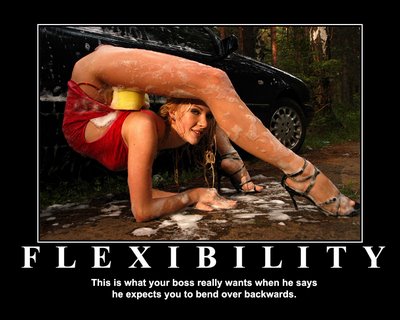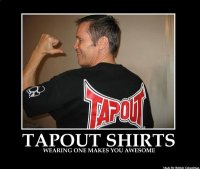Why Active Kids are Athletic Adults
Yesterday I was chatting briefly with a girl who used to dance ballet, and while she felt she had lost a lot of her cardio and strength since she stopped dancing, she was amazed that she had retained a lot of her flexibility. Now I’ll be the first to admit that I’m totally jealous of anyone with any real flexibility, because I don’t really have any. My hamstrings are shorter than Danny DeVito tying his shoes. But this is still ridiculously cool:
So why did she still manage to maintain her flexibility after she stopped dancing? For the same reason she had back pain, and why most dancers, gymnasts and figure skaters can retain their flexibility for a long time after they stop training and have piss-poor joint stability in adult life. Their bones changed from their training as youth and then solidified as adults.
Young athletes who value flexibility in the highest regard spend a lot of time pushing into a stretch, often to the point of discomfort and occasionally some pain (Additionally, their coaches are jerks who make them push into these stretches, saying it’s good for them with absolutely no research to back it up for long-term studies). With this pushing, they aren’t simply stretching their muscles or tendons, but are actually pressing on their bones and causing a mild deformation to the actual joint structure and bony architecture that will allow them to stay flexible longer. Most people when trying to do splits will have restrictions commonly in the anterior hip capsule, as well as the length of the actual hamstring muscles. Give someone who is in their thirties and has never stretched before the direction to perform the splits, and they may just rip their groin apart, and not in a good way!!
Baseball players get the same concept in their throwing shoulders. As youth begin to hit the puberty age, the shoulder normally starts becoming stiffer and conforms with more of a forward position in the socket (anetorsional position), whereas baseball players can see a delay in this movement and retain a humeral position that’s more favorable to throwing a hunk of stitched up leather. Get a group of people together and watch how they all throw: it’s pretty easy to pick out those who played as a kid and those who have absolutely no idea what to do (like me). Trust me, in a game of baseball, you want me on the other team!!!
Hockey players go through this too. I had a chance to meet Peter Twist this past month, and like I always do, I watched how he walked. I know, I’m a big geek. You made your point. I hate you all!!! ** storms out of the room and slams door behind, sealing his exit with awesome sound effects. You can definitely tell he played hockey in tight skates for a good portion of his life, because his feet are all messed up, he doesn’t walk with his entire foot, and his knees are hypermobile to make up for the lack of mobility at his hips. I’m sure if he was willing to take off his shoes and show his feet, we’d see all sorts of hammer toes, bunions, etc from bony changes to the feet from all those pairs of tight Bauers.
Swimmers tend to have ridiculous shoulder flexibility, and also occasionally run in to knee problems if they did a lot of breast stroke.
So why did the dancer retain all her flexibility? Because when she was young, her stretching caused a change in not only her muscles, but the bones that would resist her flexibility. Kids have very soft bones that respond to the stresses put on them, including those from exercise. Axial loading exercises have been shown to increase bone strength and bone mineral density in youth, just like non-axial forces have been shown to alter the position and shape of the bone in the direction of the force application. Adults don’t seem to have this ability to remodel their bones as easily, so flexibility gains in adults are commonly limited. The repeated low-level force application to the body hasn’t been present to create those changes, and the bones have lost that softness, so change will be more difficult now than when they were a kid.
The moral of the story is that if you want your kids to grow up to have freaky flexibility as adults, or to be athletic adults who can rule the world from their physical abilities, put them in sports when they’re young. Children who are active are way less likely to be obese, and obese children are much more likely to become obese adults. With poor flexibility. The downside is that too much stretching as youth without the proper core strengthening and spinal stability will commonly result in back pain in adults with hypermobile pelvic and hip structures that can’t support their body weight properly. Stretching has to be balanced with strengthening.
It should also be noted that wearing anything Tapout, Ed Hardy or Christian Audiger doesn’t make you anything like GSP. It just makes you look like a douchebag.



